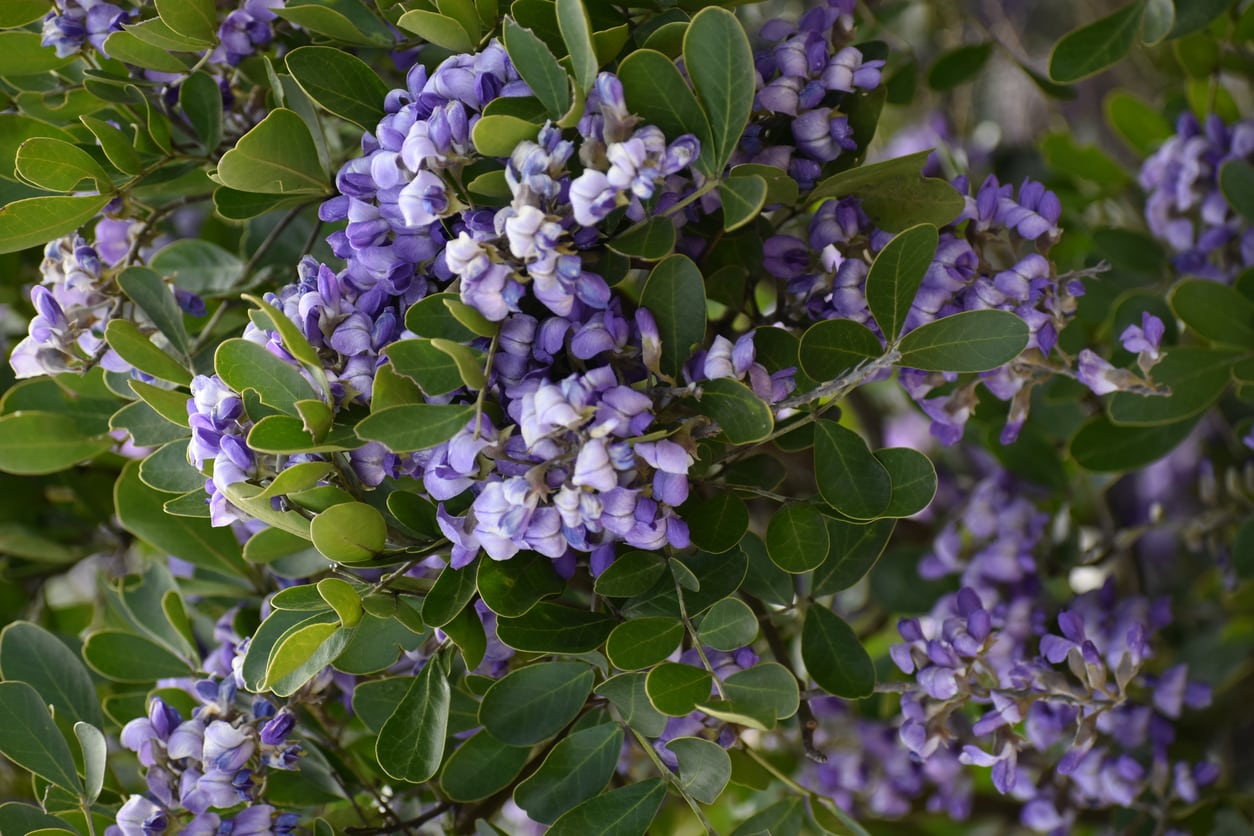Texas Mountain Laurel Won’t Bloom: Troubleshooting A Flowerless Texas Mountain Laurel


Texas mountain laurel, Dermatophyllum secundiflorum (formerly Sophora secundiflora or Calia secundiflora), is much loved in the garden for its glossy, evergreen foliage and fragrant, blue-lavender colored blooms. However, here at Gardening Know How, we often get questions about how to get flowers on Texas mountain laurel plants. In fact, no flowers on Texas mountain laurel seem to be a common occurrence. Continue reading to learn possible reasons why your Texas mountain laurel won’t bloom.
Why Texas Mountain Laurel Has Never Bloomed
Hardy in U.S. hardiness zones 9-11, Texas mountain laurel can be a finicky or reluctant bloomer. These plants bloom in spring, then in midsummer to fall they begin to form the flower buds of the next season. The most common reason for no flowers on Texas mountain laurel is improperly timed pruning. Texas mountain laurel should only be pruned and/or deadheaded immediately after it’s done flowering. Pruning and deadheading in fall, winter, or early spring will result in inadvertently cutting off the flower buds, causing a season of flowerless Texas mountain laurel. Texas mountain laurel is also slow to recover from any hard pruning. If the plant is cut back too much, blooms can be delayed for a season or two. Transplant shock can also result in flowerless Texas mountain laurel. Experts strongly suggest planting a new, young Texas mountain laurel, rather than trying to transplant an already established one because they are so susceptible to transplant shock. Transplanting Texas mountain laurel can cause the plant to not bloom for several seasons.
How to Get Flowers on a Texas Mountain Laurel
Environmental factors that can cause Texas mountain laurel to not bloom include too much shade, waterlogged or heavy clay soil, and too much nitrogen. Texas mountain laurel can grow in dappled to part shade. However, to bloom properly, they need 6-8 hours of sunlight every day. Before planting a Texas mountain laurel, it is recommended that you track the sunlight in your yard to properly select a site where it can receive enough sunlight. Heavy, waterlogged soils can cause root and crown rot of Texas mountain laurel, which will result in defoliation and bud or bloom drop. It is simply a plant’s natural defense when they are sick or under an insect attack to drop foliage and blooms. Make sure to plant Texas mountain laurels in well-draining soils. Another common reason why Texas mountain laurel has never bloomed is too much nitrogen. Nitrogen promotes leafy green growth on plants, not bloom or root development. Nitrogen runoff from lawn fertilizers can inhibit the production of blooms, so it is best to select a site for Texas mountain laurels where they will not catch this high nitrogen runoff. Also, when fertilizing Texas mountain laurel, select a fertilizer for acid-loving plants with a low level of nitrogen.
Sign up for the Gardening Know How newsletter today and receive a free copy of our e-book "How to Grow Delicious Tomatoes".

Darcy is a former contributor to Gardening Know How. She is a professional landscape designer and gardening writer with experience in plant sales. An avid gardener, Darcy has a passion for sharing practical tips to help others grow.